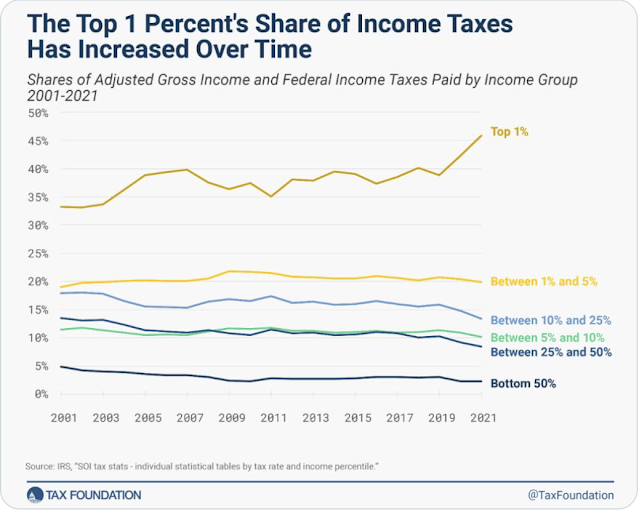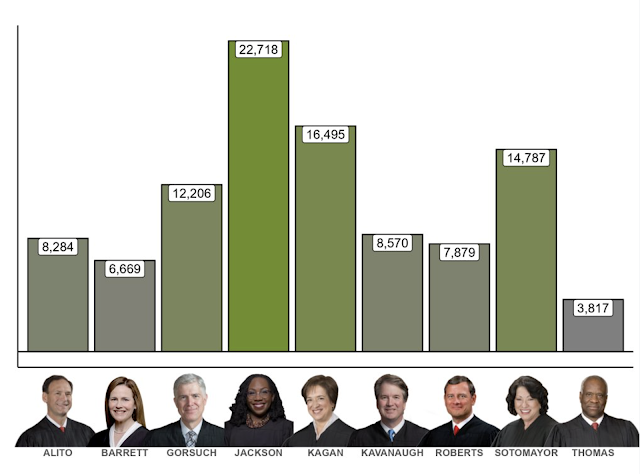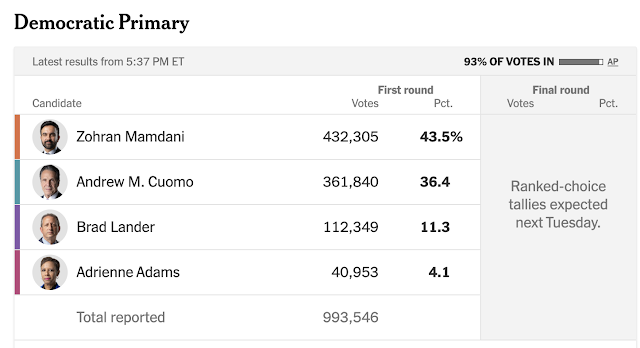BUDGET. SURPLUS.
Two words that you almost never see together when it comes to the federal government.
It has been 24 years since the federal government had an annual budget surplus.
Over the last 10 years the federal government has averaged a budget deficit of $120 billion per month.
 |
| Source: https://fred.stlouisfed.org/series/MTSDS133FMS |
Most of the time the only monthly surplus we have seen will be in April when final payments for the previous tax year and first quarter estimated taxes for the current year are due.
The other common months where we might see a surplus are June, September and January which are the other months that estimated taxes are due.
However, we have not seen a monthly surplus for the month of June in 10 years.
Until June, 2025.
 |
| Source: https://www.cnbc.com/video/2025/07/11/u-s-government-reports-budget-surplus-of-27-billion-vs-20-point-5-billion-deficit-estimated.html |
The budget surplus came as a huge surprise to economists and government observers.
To put the number in context, consider the federal government deficits for the previous four years.
June, 2025. $26 billion surplus
June, 2024. $71 billion deficit
June, 2023. $228 billion deficit
June, 2022. $89 billion deficit
June, 2021. $174 billion deficit
There was almost a $100 billion improvement in the federal government's fiscal situation between last June and this June.
How did that happen?
The media has highlighted a surge in revenue from tariffs in most stories involving the monthly surplus.
 |
| Source: https://www.cnbc.com/2025/07/11/treasury-posts-unexpected-surplus-in-june-as-tariff-receipts-surge.html |
The revenue coming in from tariffs is confounding the predictions of many economists.
The tariffs thus far have also not caused the inflation that the same economists predicted would occur.
The actual Truflation inflation index is about half of what it was at the beginning of the year.
However, tariffs are only part of the reason for the monthly surplus.
If we compare the financial data that is in the U.S. Treasury Department's Monthly Treasury Statement we see that receipts for the month improved by $60 billion compared to June, 2024 and outlays declined by $37 billion.
Only $21 billion of the $60 billion of increased receipts is due to customs duties. The remainder is largely due to increased individual income tax receipts.
The reduction in total outlays was also significant. We don't often see year over year decreases in federal spending under any circumstances.
$32 billion of the $37 billion in reduced outlays compared to the previous year appears to be due to timing shifts since June 1 fell on a weekend. The remaining difference appears to be primarily due to lower outlays in the Department of Education regarding student loan debt. The Biden administration apparently had recorded a cost of $74 billion in June, 2024 for estimated student loan costs (presumably for student loan forgiveness) that was not done in 2025 by the Trump administration.
You can compare June, 2024 to June, 2025 based on data in the U.S. Treasury Department's Monthly Treasury Statement.
Note that this graphic was taken from the June, 2024 Monthly Treasury Statement which reflects a $66 billion deficit. The June, 2024 deficit was later revised to $71 billion deficit as shown in the June, 2025 statement.
A federal government surplus for a single month is hardly anything to get overly excited about.
Even considering last month's surplus the federal deficit was $1.9 trillion over the last 12 months.
 |
| Source: https://www.crfb.org/blogs/12-month-rolling-deficit-19-trillion-june-2025 |
However, if you look at this chart closely, you can see that the deficit has been trending down since Trump took office.
It is a start.
Tariffs are helping but much more has to be done on the spending side if the federal deficit is to be brought under control.
What will help the most in reducing the deficit is if we can get economic growth such that tax receipts growth is consistently outpacing the growth in outlays.
This would then allow the annual federal deficit as a % of GDP to get to a more manageable 3% of GDP compared to the 6% range it has been at recently.
 |
| Source: https://fred.stlouisfed.org/series/FYFSGDA188S |
However, to do this it will require that tax receipts out pace outlays by about three percentage points per year for the next five years.
It is unlikely that economic growth alone can accomplish this goal so there has to be some sort of serious spending restraints to avoid fiscal disaster.
Of course, that is easier said than done when we look at what is going on in Washington, D.C.
A good example is the shock and angst we saw reported in the media late last week over layoffs that took place after 1,300 State Department employees were dismissed in a reorganization of the department.
 |
| Source: https://www.nbcnews.com/politics/trump-administration/veteran-us-diplomats-baffled-mass-layoffs-state-department-rcna218433 |
 |
| Source: https://thehill.com/homenews/administration/5396900-trump-rubio-state-department-layoffs/ |
 |
| Link: https://x.com/ralakbar/status/1943787864501653651 |
Such reorganizations and layoffs often happen in the private sector due to a changing competitive and technological environment.
Just last week Microsoft announced that it was laying off 15,000 employee due to AI with only a fraction of the media coverage the government layoffs received.
There were no tv cameras at Microsoft headquarters filming the "moving scene" as those employees left work for the last time.
 |
| Source: https://www.timesnownews.com/business-economy/industry/microsoft-cuts-15000-jobs-amid-ai-pivot-tells-employees-invest-in-your-own-ai-skilling-excerpt-article-152265387 |
Layoffs and terminations almost never happen in government. However, when was it decided that a government job was a lifetime paycheck?
For example, the State Department had 57,000 employees in 2007 and it reported 80,214 on its payroll recently.
Has that much changed in the world the last 20 years that requires 23,000 more State Department employees to do the business of diplomacy?
The 1,300 dismissals is but 1.6% of the total number of employees at the State Department.
If this number can't be cut what can?
For one month we can sit back and soak in the beauty of these two words---Budget Surplus.



















































